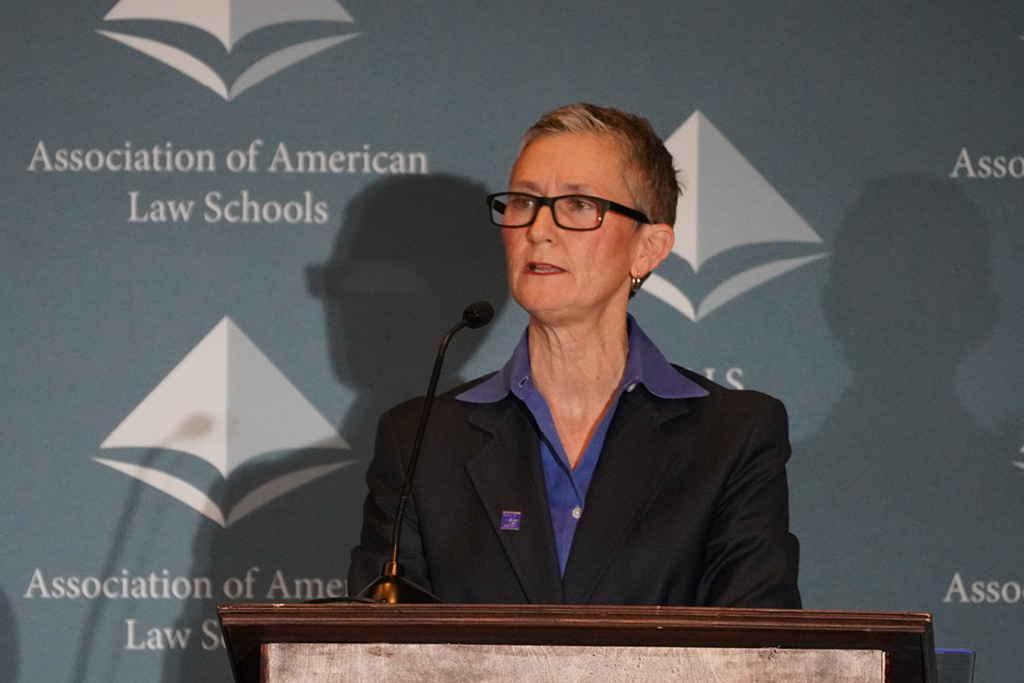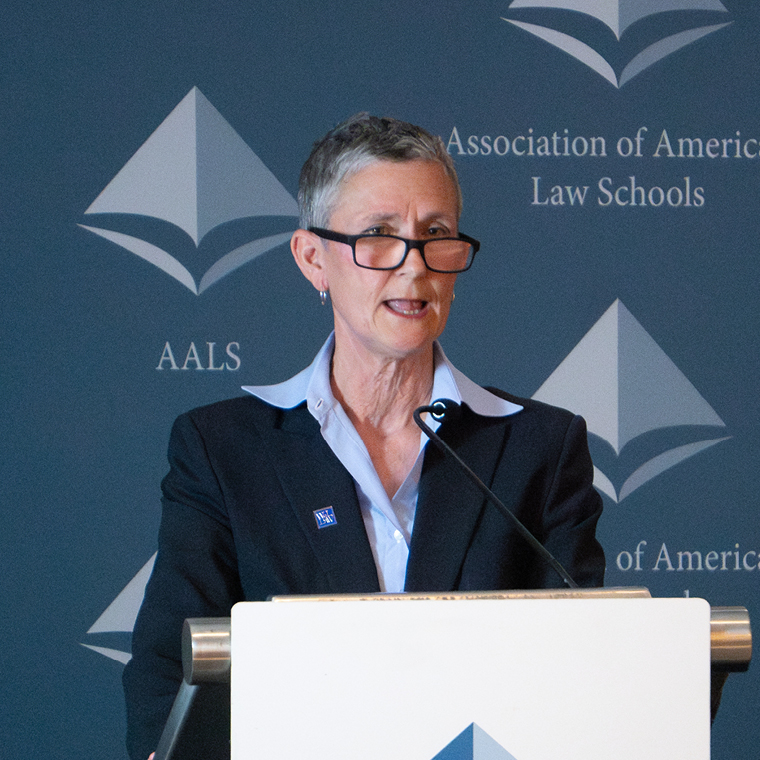By Melanie D. Wilson, AALS President and Dean, Washington and Lee University School of Law
This past academic year, law schools found themselves in the middle of intense controversies, free speech debates, and protests. On campuses, there were verbal and physical clashes between police and students, police and non-student protestors, police and faculty, students and other students. It was tense. Whether your school was at the center of these conflicts or not, we all felt the effects. Although the protests of the spring have died down for now, the campus unrest has left a wake of disharmony and hurt at many universities and within many law school communities that will need healing.
This summer, law schools have experienced a different kind of conflict. A group calling itself Faculty, Alumni, and Students Opposed to Racial Preferences sued one law school and served many others with litigation hold letters, claiming that faculty hiring at American universities favors women and racial minorities over more qualified White men. Prior to this recent lawsuit and spate of litigation warnings, law schools were targeted with litigation letters related to the SFFA v. Harvard/North Carolina cases in which the US Supreme Court declared it illegal to regularly consider race as one of a myriad of factors in the law school admissions process. The letters threatened to sue law schools for violating the Court’s new mandate if their admissions processes continued to attract and enroll a racially and ethnically diverse student body.
These attacks on law school hiring and student enrollment assume a patently false dichotomy—that attracting law school community members who are racially and ethnically diverse and hiring and enrolling women and others underrepresented in the legal profession and legal academy—whether faculty, students, or staff—means that law schools are not recruiting, hiring, and enrolling excellent, deserving high achievers. There is simply no evidence that law faculty hired in the recent past or law students enrolled before SFFA lack excellence as compared to their White counterparts. To the contrary, these claims rest on harmful, outdated, and discredited stereotypes about Black and other underrepresented persons.
The lawsuits will be resolved in due course through the court system. But the unfortunate reality of such suits is that many law schools may feel pressure (conscious or subconscious) to engage in faculty hiring practices and student recruitment processes that are far more restrictive than the law requires – or even resort to unlawful discriminatory practices that favor the majority. Provided schools comply fully with the law, including the 2023 Supreme Court admissions decision, they are well within their rights to value, encourage, and promote diversity.
Against this backdrop, I hope that we will all consider what “courage in action”—the theme for my year as AALS President—looks like. How should law faculties and law school leaders respond in the new academic year? How are we to develop the good judgment, resilience, empathy, and fortitude to do the right thing in these fraught times when law schools are under attack from so many sides?
When it comes to healing our communities from recent protests, I believe that courage begins with engaging with one another in good faith, coming together to listen and to learn from those approaching issues from different perspectives. For protestors, perhaps that means appreciating that the leaders of institutions have very real security and safety concerns for their communities that simply cannot be ignored during a crisis. For campus leaders, it means acknowledging that protest tightly proscribed by university policy is often incompatible with engaging in the kind of civil disobedience that creates needed change. These positions may seem intractable, but the solution to such conflicts will not be found on the sidelines. We must engage one another face-to-face with grace, humility, and a willingness to truly listen.
When it comes to law faculty hiring and law school admissions, we need to remember that there is so much work left undone. The American Bar Association reports that as of January 2023, there are over 1.3 million lawyers in the United States. The majority are White and male. Only 39 percent are women, although women constitute a bit more than 50 percent of the general population in the country. Only 21 percent of lawyers are people of color, half that of the US population. Even with the progress we have made during the recent decade, only 5 percent of lawyers in the United States are Black, and Native American lawyers make up less than 1 percent of US lawyers. The disparities continue when looking at law firm partners, some of the most powerful positions in the law field. Only 11.4 percent of all law firm partners in 2022 were lawyers of color, and of those, only 2.3 percent were Black.
While White male lawyers make up the majority of lawyer positions across the country, women and non-White students continue to apply to US law schools in growing numbers. In 2022, 55.7 percent of students seeking a JD in accredited US law schools were women, and about one third of JD students were students of color. The US population generally also continues to grow more and more racially and ethnically diverse. Because of the rapid change in demographics across the country, our students must be ready to represent people of all backgrounds, beliefs, religions, cultures, races, and viewpoints. Correspondingly, there is significant value in continuing to attract excellence to law school student bodies and faculties that reflects this growing diversity.
While the events and challenges of the 2023-24 academic year highlight the difficulty of this moment for law schools, the good news is that law deans, law faculties, and lawyers more broadly have always been leaders in the fight for what is right. I am confident we can continue to lead through these challenging times. The work is tough, but the complexity of the situations is even more reason to take a leadership role at your institution and within the Association of American Law Schools. We must model for our students and colleagues how to have difficult conversations face-to-face, looking for the humanity in those with whom we disagree. With heightened uncertainty and divisiveness at a pinnacle, this is the time to get involved. The protests of the past year are likely just the beginning. A presidential election looms near with a political environment that has intensified in the wake of an apparent assassination attempt on the former president and the decision of the current president to withdraw from the campaign. Lawsuits against, and demand letters to, law deans and others are becoming commonplace. This is not the time to step back. Progress is often uncomfortable.
Furthermore, the small proportion of law deans and law faculty who are underrepresented in the legal academy—whether based on their race, ethnicity, religion, gender, sexual orientation, gender identity, abilities, or other identities—as compared to the general population and law student population, illustrate that we must not be bullied into returning to the unlawful discriminatory ways of the past. We must not be cowed by tactics designed to intimidate and discriminate. This is the time for leadership, courage, and action.


